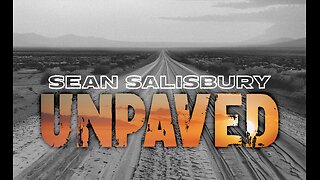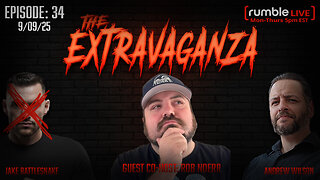Premium Only Content

Accounting Equation - Urdu/Hindi - Get Ahead in Cambridge Accounting 7707 / 9706 with Easy Tips
1. The Complete Guide to Cambridge Accounting 7707 and 9706 for O Levels A Levels!2. The Secret to Getting Great Grades in Cambridge Accounting 7707 and 9706!3. How to Ace Cambridge Accounting 7707 and 9706 in Just One Month!4. The Most Comprehensive Guide to Cambridge Accounting 7707 and 9706!5. Get Ahead in Cambridge Accounting 7707 and 9706 with These Easy Tips!Follow our Channel:https://www.facebook.com/GRITuptodate@grituptodate4591https://www.febspot.com/ref/371435
INTRODUCTION TO THE ACCOUNTING EQUATION:From the large, multi-national corporation down to the corner beauty salon, every business transaction will have an effect on a company's financial position. The financial position of a company is measured by the following items: 1. Assets (what it owns)2. Liabilities (what it owes to others)3. Owner's Equity (the difference between assets and liabilities)THE ACCOUNTING EQUATION (or basic accounting equation) offers us a simple way to understand how these three amounts relate to each other. The accounting equation for a sole proprietorship is:ASSETS = CAPITAL + LIABILITIESThe accounting equation for a corporation is: ASSETS are a company's resources—things the company owns. Examples of assets include cash, accounts receivable, inventory, prepaid insurance, investments, land, buildings, equipment, and goodwill. From the accounting equation, we see that the amount of assets must equal the combined amount of liabilities plus owner's (or stockholders') equity.CAPITAL: Resources provided by the owner to business. It is often called as Equity as well.LIABILITIES are a company's obligations—amounts the company owes. Examples of liabilities include notes or loans payable, accounts payable, salaries and wages payable, interest payable, and income taxes payable (if the company is a regular corporation). Resources of a Business can be explained through accounting equation as;Resources of the business = Who provided themASSETS (What are the resources a business HAS) = CAPITAL + LIABILITIES (Who supplied them or to whom business OWES)
ASSETS:1- CURRENT ASSETS:Current assets include cash and cash equivalents, accounts receivable (Debtors), inventory, marketable securities, prepaid expenses and other liquid assets that can be readily converted to cash. 2- NON-CURRENT/ FIXED ASSETS (Also Called Long Term Assets)A fixed asset is a long-term tangible or In Tangible piece of property that a firm owns and uses in the production of its income and is not expected to be consumed or converted into cash any sooner than at least one year's time. LIABILITIES1- CURRENT LIABILITIES:Current liabilities are debts payable within one yearTitles of Transactions:• Trade Payables/Creditors/(Accounts Payables)• Bills Payable • Bank Overdraft • Outstanding expenses • Advances from customers 2- NON-CURRENT/ LONG-TERM LIABILITIES:Long-term liabilities, in accounting, form part of a section of the balance sheet that lists liabilities not due within the next 12 months. REVENUEFormal Definition: The gross increase in owner's equity resulting from the operations and other activities of the business. Informal Definition: Amounts a business earns by selling services and products and investing. Amounts billed to customers for services and/or products.1- OPERATING REVENUE: Revenues resulting from the normal operations of a business such as the revenues resulting from the sale of products and services to your customers. 2- NON-OPERATING REVENUE &GAINS: Non-operating revenue accounts include all types of income that you receive that are not part of your main line of business. In other words, revenues or gains resulting from something other than from normal business operations. EXPENSES:Formal Definition: Decrease in owner's equity resulting from the cost of goods, fixed assets, and services and supplies consumed in the operations of a business. Informal Definition: The costs of doing business. The stuff we used and had to pay for or charge to run our business.Categories of Expenses = 4(1- Operating/ Revenue Expenses (2- Capital/ Non Current Expenses(3- Non-Operating Expenses, (4- Cost of Sales or Cost of Goods Sold)1- OPERATING / REVENUE EXPENSES (OPEX)The expenses related to normal daily operationsfor the current accounting period such as wages, rent, advertising, insurance, etc. While not absolutely necessary, the Operating Expenses are often grouped into two main functional areas of operation: Selling ExpensesSelling Expenses are expenses incurred and related to making sales. Examples are sales salaries & wages, fringe benefits, advertising, travel, entertainment, catalogues, rent, utilities, telephone, commissions, warehousing, shipping, depreciation, office supplies, postage, etc. General and Administrative Expenses (G&A)2- CAPITAL EXPENSES (CAPEX):The Costs or Amounts Spent to acquire or to improve a long term/ non Current Asset is called Capital Expenses.
-
 LIVE
LIVE
Glenn Greenwald
2 hours agoIsrael Bombs Qatar and Trump Reacts; The Hoax to Blame Russia for Jamming EU President's Plane GPS; Mamdani Soars in Polls as he Tries to Moderate on Israel | SYSTEM UPDATE #511
13,918 watching -
 1:05:46
1:05:46
BonginoReport
2 hours agoWe Don’t Hate The Media Enough - Nightly Scroll w/ Hayley Caronia (Ep.130) - 09/09/2025
27.5K17 -
 1:02:26
1:02:26
The Nick DiPaolo Show Channel
3 hours agoPOC Murders Another White Woman | The Nick Di Paolo Show #1790
8.61K14 -
 LIVE
LIVE
Sean Unpaved
51 minutes agoVikings vs. Bears MNF Thriller: J.J. McCarthy's Clutch Comeback & NFL Week 1 Recap
71 watching -
 1:19:47
1:19:47
Kim Iversen
3 hours agoIsrael Tried to Kill Hamas in Qatar — Here’s What Really Happened
21.9K60 -
 1:01:38
1:01:38
TheCrucible
3 hours agoThe Extravaganza! EP: 34 (9/09/25)
49.4K11 -
 LIVE
LIVE
Quite Frankly
5 hours ago3I/ATLAS Space Invasion & Other Strange Stories | Ryan Gable 9/9/25
443 watching -
 2:02:27
2:02:27
Redacted News
3 hours ago"This is an ACT OF WAR!" Israel Bombs Qatar - Middle East Descending into Chaos | Redacted
87.4K102 -
 53:14
53:14
Candace Show Podcast
3 hours agoBecoming Brigitte: The God Of Amiens.
37.9K72 -
 LIVE
LIVE
MattMorseTV
3 hours ago $5.00 earned🔴Trump’s Oval Office PROCLAMATION. 🔴
1,268 watching